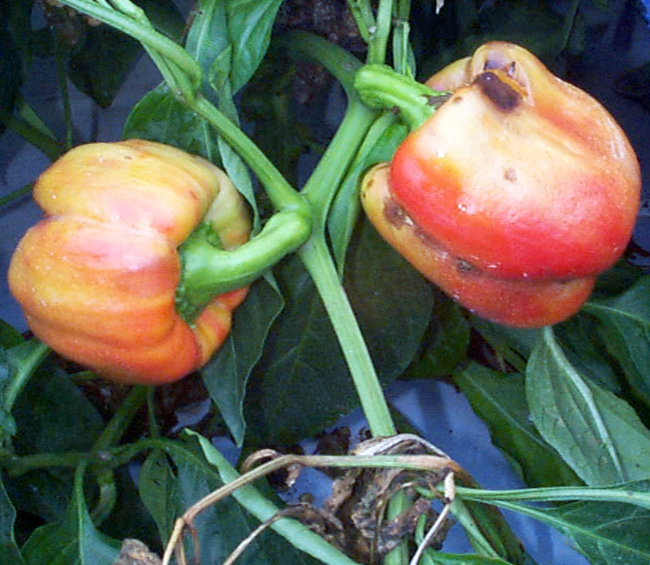|
Faba Bean Necrotic Stunt Virus
''Faba bean necrotic stunt virus'' (FBNSV) is a pathogenic plant virus of the family ''Nanoviridae''. Its infection cycle is remarkable because it has eight segments, each carried in a different particle, that can replicate independently in different host cells and then reassemble outside of the host cells into new complete virion A virus is a submicroscopic infectious agent that replicates only inside the living cells of an organism. Viruses infect all life forms, from animals and plants to microorganisms, including bacteria and archaea. Since Dmitri Ivanovsky's ...s. References {{Taxonbar, from=Q18971894 Viral plant pathogens and diseases Nanoviridae ... [...More Info...] [...Related Items...] OR: [Wikipedia] [Google] [Baidu] |
Pathogen
In biology, a pathogen ( el, πάθος, "suffering", "passion" and , "producer of") in the oldest and broadest sense, is any organism or agent that can produce disease. A pathogen may also be referred to as an infectious agent, or simply a germ. The term ''pathogen'' came into use in the 1880s. Typically, the term ''pathogen'' is used to describe an ''infectious'' microorganism or agent, such as a virus, bacterium, protozoan, prion, viroid, or fungus. Small animals, such as helminths and insects, can also cause or transmit disease. However, these animals are usually referred to as parasites rather than pathogens. The scientific study of microscopic organisms, including microscopic pathogenic organisms, is called microbiology, while parasitology refers to the scientific study of parasites and the organisms that host them. There are several pathways through which pathogens can invade a host. The principal pathways have different episodic time frames, but soil has the longest ... [...More Info...] [...Related Items...] OR: [Wikipedia] [Google] [Baidu] |
Plant Virus
Plant viruses are viruses that affect plants. Like all other viruses, plant viruses are obligate intracellular parasites that do not have the molecular machinery to replicate without a host. Plant viruses can be pathogenic to higher plants. Most plant viruses are rod-shaped, with protein discs forming a tube surrounding the viral genome; isometric particles are another common structure. They rarely have an envelope. The great majority have an RNA genome, which is usually small and single stranded (ss), but some viruses have double-stranded (ds) RNA, ssDNA or dsDNA genomes. Although plant viruses are not as well understood as their animal counterparts, one plant virus has become very recognizable: ''tobacco mosaic virus'' (TMV), the first virus to be discovered. This and other viruses cause an estimated US$60 billion loss in crop yields worldwide each year. Plant viruses are grouped into 73 genera and 49 families. However, these figures relate only to cultivated plants, which r ... [...More Info...] [...Related Items...] OR: [Wikipedia] [Google] [Baidu] |
Nanoviridae
''Nanoviridae'' is a family of viruses. Plants serve as natural hosts. There are currently 12 species in this family, divided among 2 genera and one unassigned species. Diseases associated with this family include: stunting. Their name is derived from the Greek word νᾶνος (''nanos''; dwarf), because of their small genome and their stunting effect on infected plants. Taxonomy The recognized genera are: * ''Babuvirus'' * ''Nanovirus'' The unassigned species is ''Coconut foliar decay virus''. Virus structure and genome Viruses in the family ''Nanoviridae'' are non-enveloped, with icosahedral and round geometries, and T=1 symmetry. The diameter is around 18-19 nm. The genome is composed of a multiple segments of single stranded circular DNA each ~1 kilobase in length (about 81 kb in total length). There between 6 and 11 circular segments depending on the genus. The segments each encode a single protein. There is a putative stem loop structure in the non-coding region ... [...More Info...] [...Related Items...] OR: [Wikipedia] [Google] [Baidu] |
Virion
A virus is a submicroscopic infectious agent that replicates only inside the living cells of an organism. Viruses infect all life forms, from animals and plants to microorganisms, including bacteria and archaea. Since Dmitri Ivanovsky's 1892 article describing a non-bacterial pathogen infecting tobacco plants and the discovery of the tobacco mosaic virus by Martinus Beijerinck in 1898,Dimmock p. 4 more than 9,000 virus species have been described in detail of the millions of types of viruses in the environment. Viruses are found in almost every ecosystem on Earth and are the most numerous type of biological entity. The study of viruses is known as virology, a subspeciality of microbiology. When infected, a host cell is often forced to rapidly produce thousands of copies of the original virus. When not inside an infected cell or in the process of infecting a cell, viruses exist in the form of independent particles, or ''virions'', consisting of (i) the genetic material, i.e ... [...More Info...] [...Related Items...] OR: [Wikipedia] [Google] [Baidu] |
Viral Plant Pathogens And Diseases
Viral means "relating to viruses" (small infectious agents). Viral may also refer to: Viral behavior, or virality Memetic behavior likened that of a virus, for example: * Viral marketing, the use of existing social networks to spread a marketing message * Viral phenomenon, relating to contagion theory or the "virality" of network culture, such as a meme * Viral video, a video that quickly attains a high popularity Titled works * ''Viral'' (2016 American film), a 2016 American science fiction horror drama * ''Viral'' (2016 Hindi film), an Indian Bollywood film based on social media * ''Viral'' (web series), a 2014 Brazilian comedy web series * '' V/H/S: Viral'', an American anthology horror film * '' Viral: The Search for the Origin of COVID-19'', a book by Alina Chand and Matt Ridley See also * ''Virals'', a novel series by Kathy Reichs * Virulence Virulence is a pathogen's or microorganism's ability to cause damage to a host. In most, especially in animal system ... [...More Info...] [...Related Items...] OR: [Wikipedia] [Google] [Baidu] |

